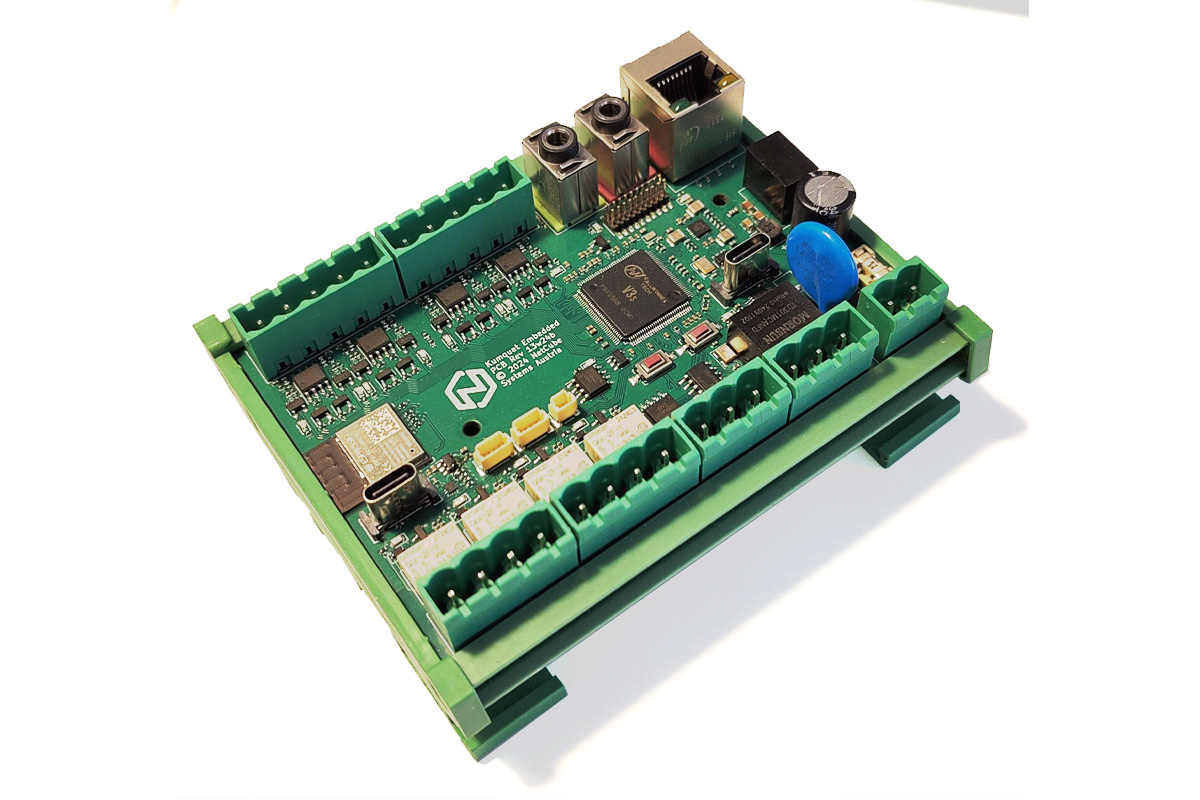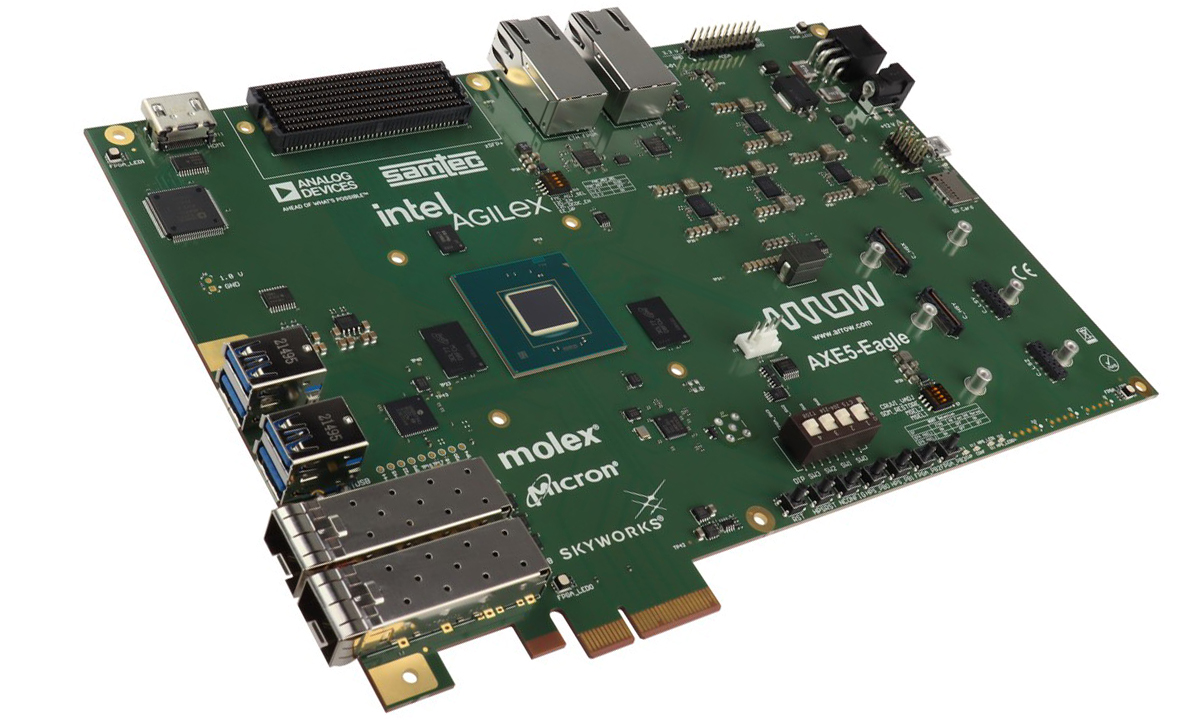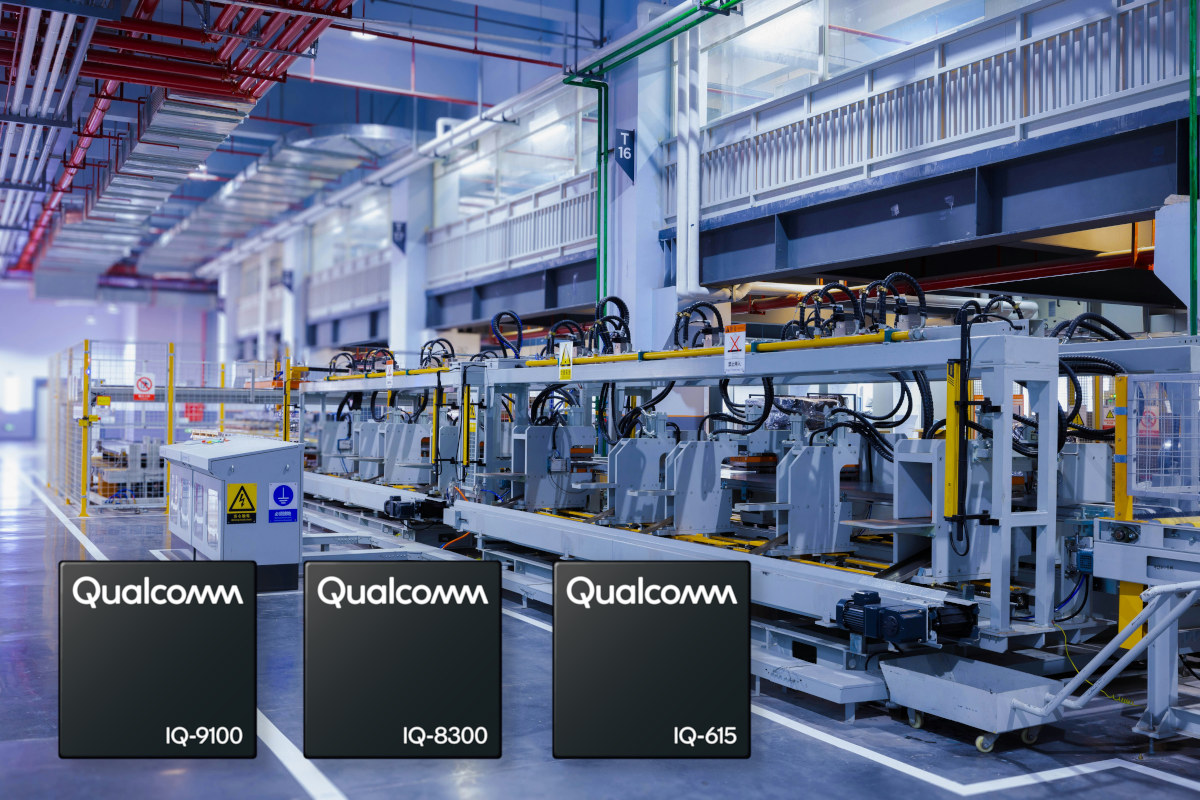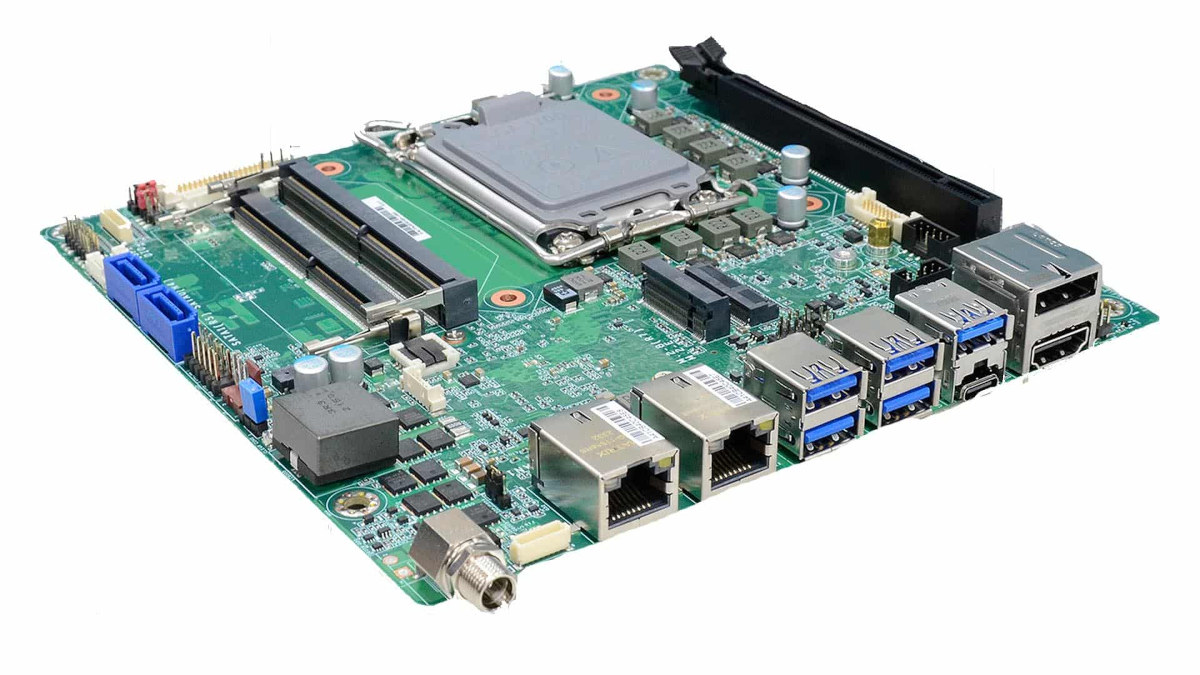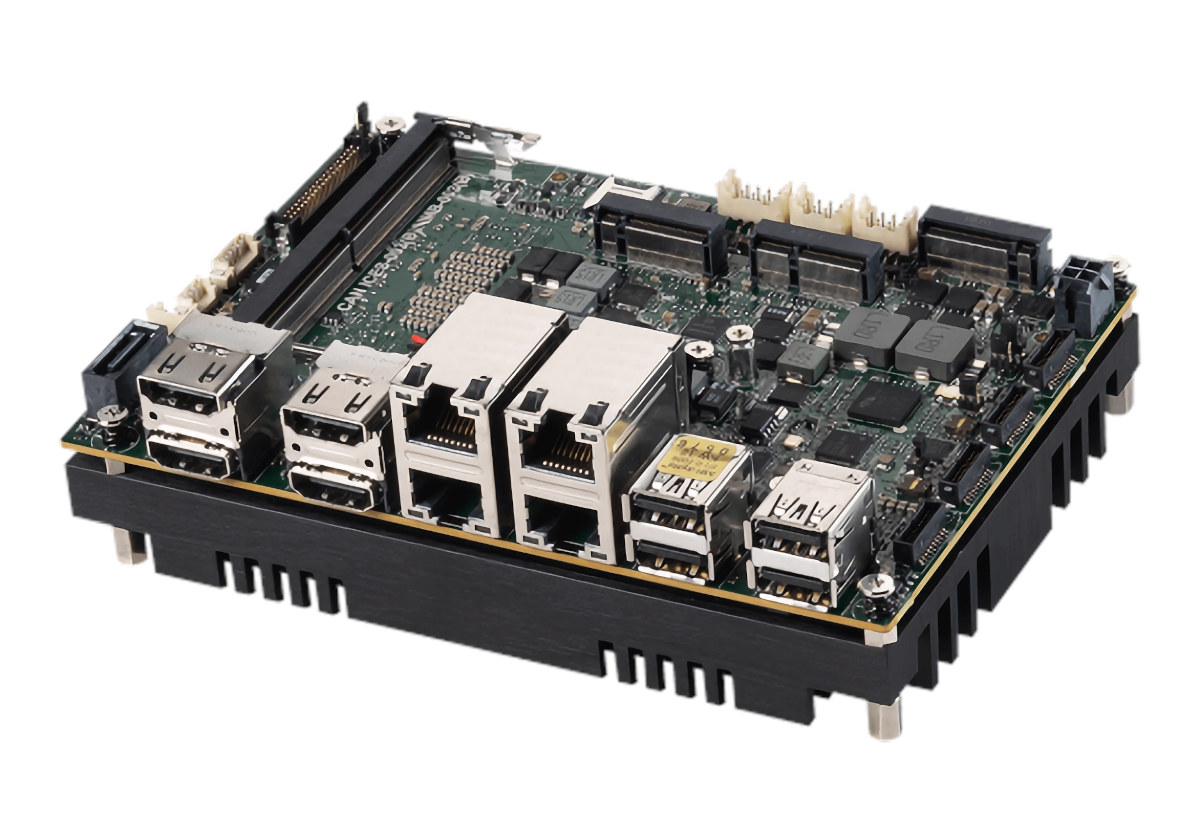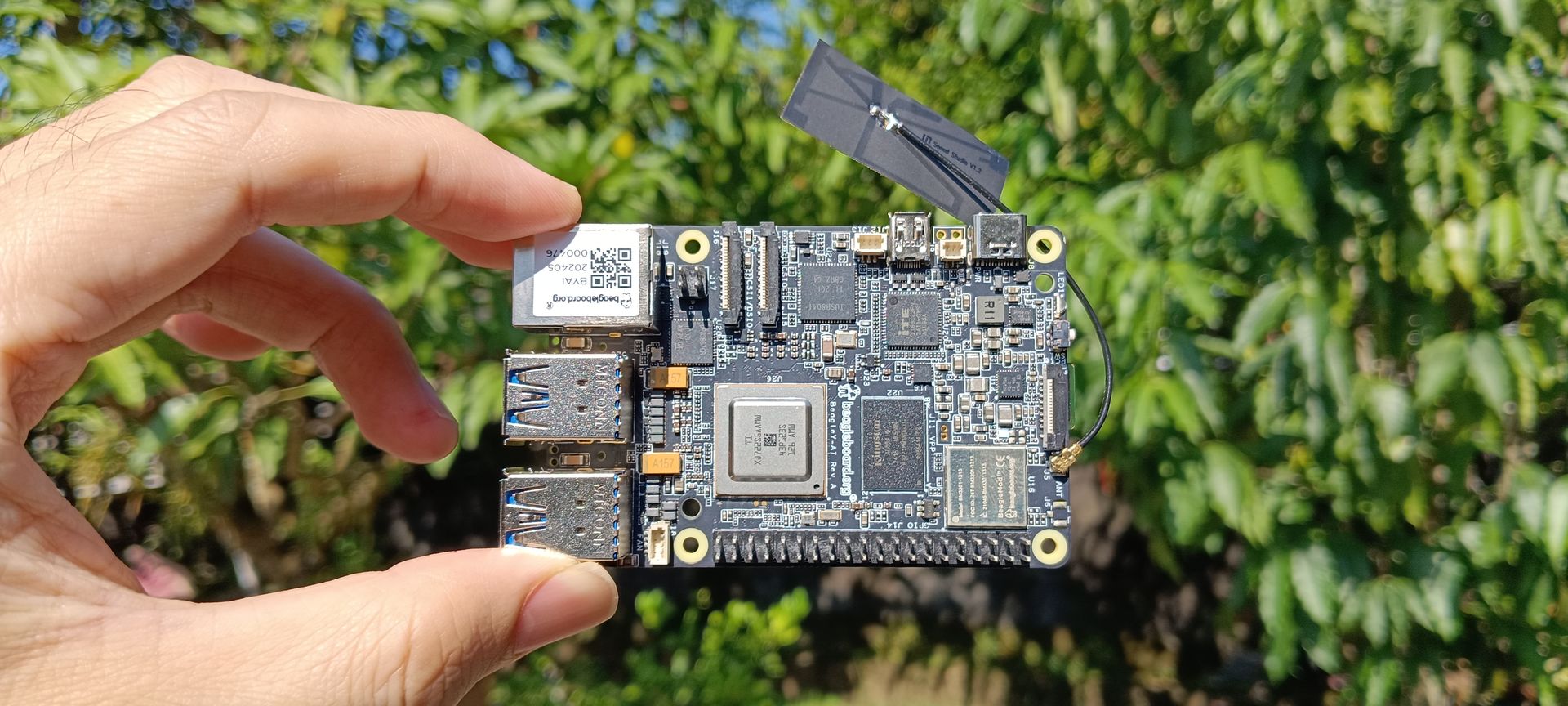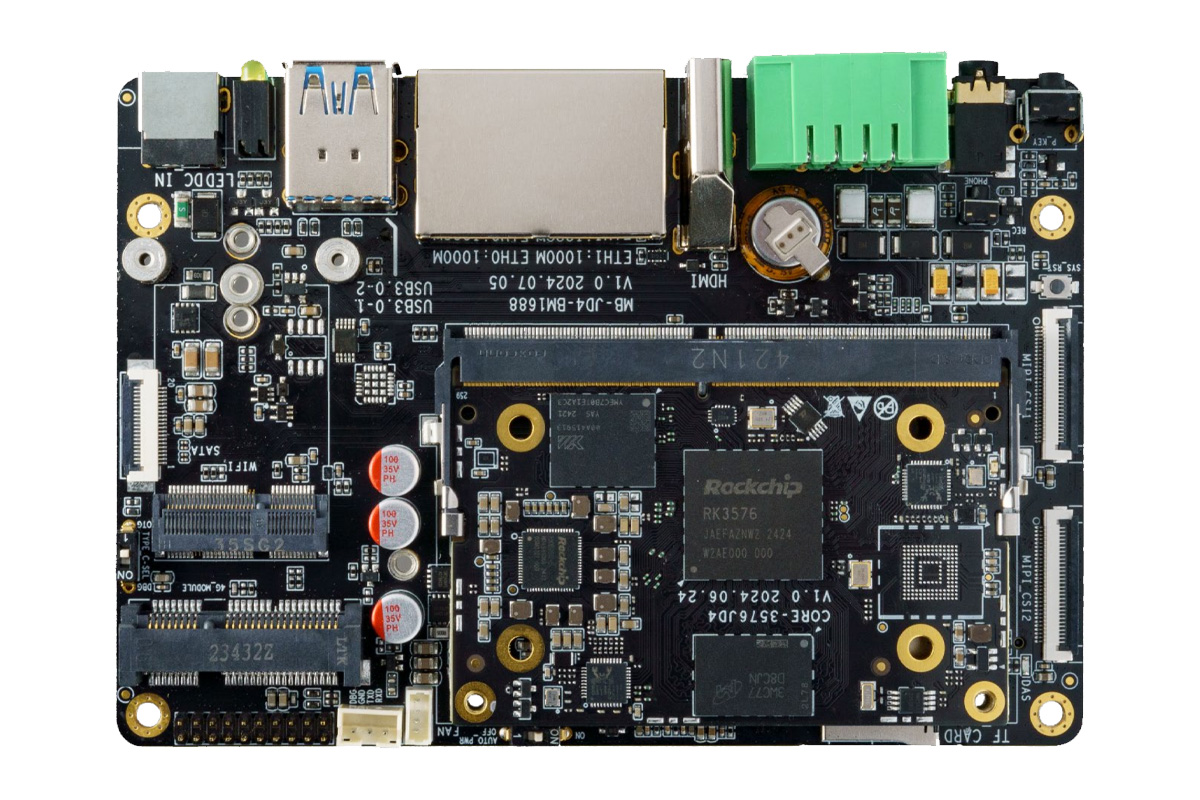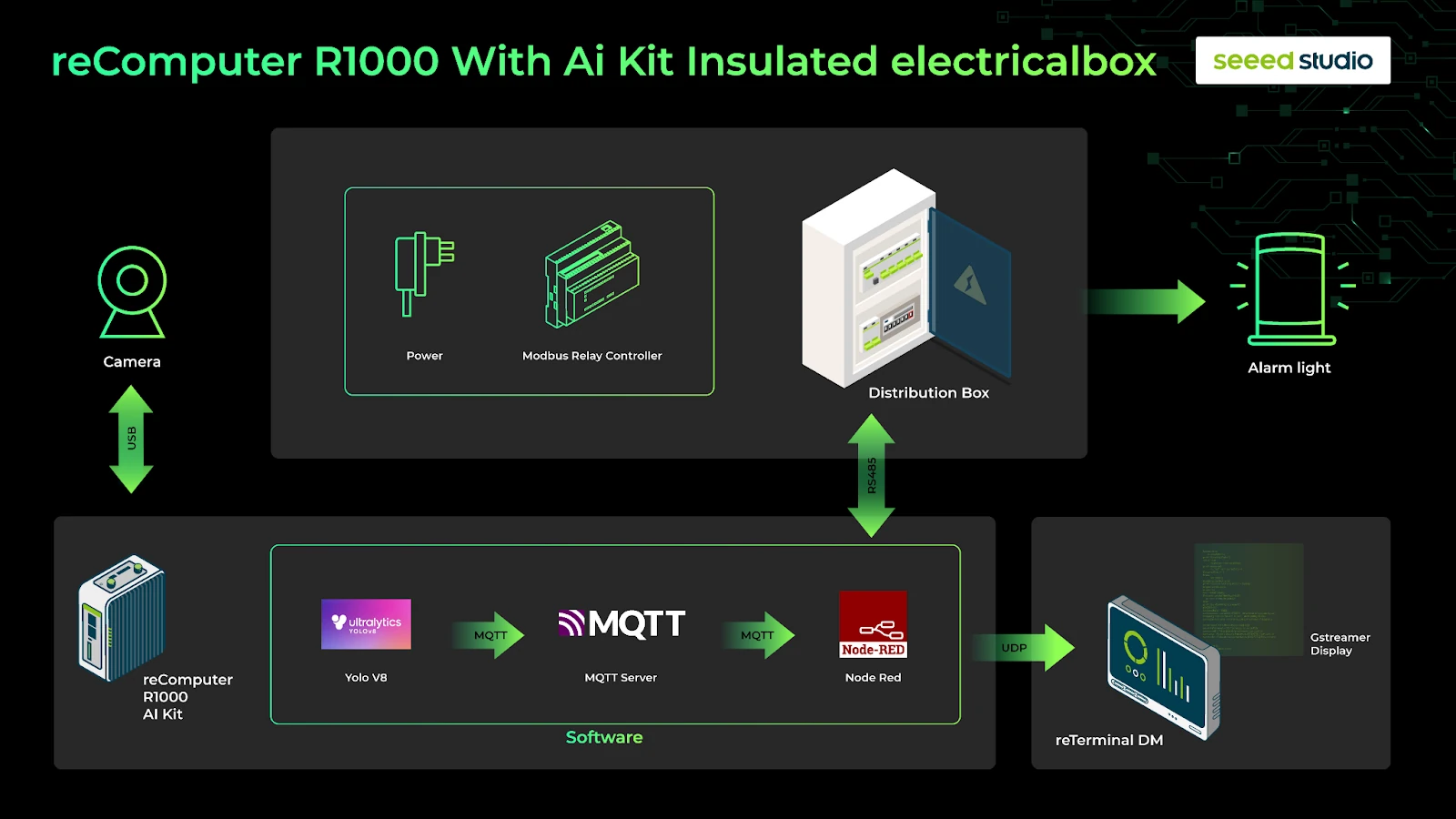The Kumquat is an Allwinner V3s board designed for industrial automation, home automation, IoT projects, robotics, and embedded system development. The Allwinner V3s features ARM Cortex-A7 cores with 64MB DDR2 RAM and 8MB SPI flash storage. Connectivity options include Ethernet, USB-C, isolated CAN-FD, and WiFi/Bluetooth via an ESP32 module. Additionally, it has eight auto-detecting 12/24V IOs, four relays for controlling external devices, and a real-time clock with battery backup. The Kumquat runs on Buildroot Linux with a mainline kernel and can be programmed with various programming languages making it a great alternative to traditional PLCs. Kumquat board specification SoC – Allwinner V3s CPU – ARM Cortex-A7 @ up to 1.2 GHz Memory – Integrated 64MB DDR2 DRAM clocked at 400MHz @ 1.5 V Video engine Storage 8MB SPI Flash for bootloader and user code I2C EEPROM for MAC addresses and user data SDIO Connector for eMMC or SD card Connectivity […]
Trenz Electronic AXE5-EAGLE-ES devkit features Intel Agilex 5 E-Series SoC FPGA
The Trenz Electronic AXE5-EAGLE-ES devkit (development kit) is powered by an Intel Agilex 5 E-series SoC FPGA, codenamed Sundance Mesa. It is designed for FPGA applications in sectors such as wireless communication, video broadcast, and defense. The kit provides 656k logic elements and a quad-core processing system featuring dual-core Arm Cortex-A76 and Cortex-A55 clusters. It supports high-speed transceivers up to 17 Gbps, PCIe 4.0 connectivity, and integrated memory interfaces like DDR4 and LPDDR4/5. Built on Intel’s 7 technology, the Agilex 5 architecture is optimized for midrange FPGA applications, offering a compact design with efficient performance-per-watt. The FPGA includes enhanced DSP blocks with AI Tensor capabilities for AI and digital signal processing tasks. Additionally, it incorporates Intel’s second-generation Hyperflex Architecture, enabling greater flexibility for handling dynamic workloads. Previously, we covered the iW-RainboW-G58M system-on-module, which features Intel’s Agilex 5 SoC FPGA E-series, a cost-effective, midrange solution for intelligent edge and embedded applications. […]
Qualcomm introduces IQ9, IQ8, and IQ6 “Dragonwing” industrial IoT SoC families with up to 100 TOPS of AI performance
Qualcomm Technologies has introduced the new industrial-grade IQ chipset family with the IQ9, IQ8, and IQ6 series offering on-device AI performance of up to 100 TOPS, industrial temperature range, and built-in safety features such as SIL-3 (safety and integrity level). [Update February 26: Qualcomm’s marketing tam has been hard at work and has now come up with a product name for the family: ” Dragonwing”] Qualcomm IQ series of chipsets target a range of premium (IQ9), mid-tier (IQ8), and entry-level (IQ6) applications such as industrial and agricultural robots, drones, industrial inspection and automation, edge AI boxes with computer vision capabilities, edge gateway analytics solutions, and more. Qualcomm IQ9 Series – IQ-9100, IQ-9075 Key features and specifications: CPU IQ-9075 – Octa-core Kryo Gen 6 scaling from 1.632 to 2.55 GHz IQ-9100 – Octa-core Kryo Gold Prime @ 2.36 GHz (CNXSoft: The specs are not clear for the CPU part…, both SKUs […]
DFI RPS101/RPS103 mini-ITX motherboards support 12th-14th Gen Intel processors, quad 4K displays, dual 2.5GbE
DFI has recently launched the RPS101/RPS103 industrial mini-ITX motherboards compatible with 14th/13th/12th Gen Intel Core processors and equipped with R680E, Q670E, or H610E chipset. They also support up to 64GB of DDR5 memory and offer various connectivity and management features including support for up to four independent 4K displays, two Intel 2.5GbE ports, and an integrated DFI M2-OOB module. These features are designed to meet the demands of factory automation and kiosk applications, and the company claims its latest mini-ITX motherboards are ideal for businesses that need to reduce TCO and accelerate AI adoption. RPS101/RPS103 mini-ITX motherboards’ specifications CPU options LGA 1700 Socket (one or the other) 14th Gen Raptor Lake-S Refresh – Intel 300T dual-core to Intel Core i9-14900 24-core 13th Gen Raptor Lake-S – Intel G6900TE dual-core to Intel Core i9-13900 24-core 12th Gen Alder Lake-S – Intel G6900TE dual-core to Intel Core i9-12900 16-core Graphics Intel HD […]
MSI MS-CF17 is a 3.5-inch fanless single board computer with Intel Raptor Lake-P SoC
The MSI MS-CF17 is a fanless 3.5-inch single board computer powered by the Intel 13th Gen Raptor Lake-P series with options for embedded and industrial SKUs. It comes with up to 32GB of DDR5 SODIMM memory and features an M.2 M key (PCIe Gen4) socket and a SATA III storage slot. It also supports four 2.5GbE ports, four internal COM ports, eight USB interfaces, and M.2 Key-B and Key-E sockets for wireless expansion. It supports four independent displays via four HDMI 2.0 ports and an eDP/LDVS display interface. Potential applications for the fanless single board computer include industrial automation, digital signage, edge computing, transportation, and imaging systems MSI MS-CF17 specifications: SoC – Intel 13th Gen Raptor Lake-P Embedded/Industrial SKU Series; P-core: 4.3GHz ~ 4.9GHz; E-core: 3.2GHz ~ 3.7GHz; Intel Iris Xe Graphics (Core i5/i7) or Intel UHD Graphics (Core i3) Core i7-1365UE / i5-1345UE / i5-1335UE / i3-1315UE / U300E, […]
BeagleY-AI SBC review with Debian 12, TensorFlow Lite, other AI demos
Today I’ll be reviewing the BeagleY-AI open-source single-board computer (SBC) developed by BeagleBoard.org for artificial intelligence applications. It is powered by a Texas Instruments AM67A quad-core Cortex-A53 processor running at 1.4 GHz along with an ARM Cortex-R5F processor running at 800 MHz for handling general tasks and low-latency I/O operations. The SoC is also equipped with two C7x DSP units and a Matrix Multiply Accelerator (MMA) to enhance AI performance and accelerate deep learning tasks. Each C7x DSP delivers 2 TOPS, offering a total of up to 4 TOPS. Additionally, it includes an Imagination BXS-4-64 graphics accelerator that provides 50 GFlops of performance for multimedia tasks such as video encoding and decoding. For more information, refer to our previous article on CNX Software or visit the manufacturer’s website. BeagleY-AI unboxing The BeagleY-AI board was shipped from India in a glossy-coated, printed corrugated cardboard box. Inside, the board is protected by […]
Firefly introduces Rockchip RK3576 SoM and All-in-One carrier board compatible with NVIDIA Jetson Orin Nano and Orin NX modules
Firefly has released a Rockchip RK3576 SoM and development board called the Core-3576JD4 Core Board with a SO-DIMM edge connector and the AIO-3576JD4 carrier board respectively. The core board or the SoM is built around an octa-core 64-bit processor with a Mali G52 MC3 GPU and a 6 TOPS NPU, so it can handle demanding AI tasks while maintaining low power consumption. The AIO-3576JD4 is a full-fledged carrier board with a wide range of on-board interfaces, like dual Gigabit Ethernet ports, MIPI-CSI, HDMI 2.1, USB 3.0, USB 2.0, USB Type-C, a Phoenix connector for serial, dual-row pin headers (SPI, I2C, Line in, and Line out), an M.2 socket for 5G, a mini PCIe for 4G LTE, an M.2 socket for WiFi 6/BT 5.2, and a third M.2 socket for SATA/PCIe NVMe SSD expansion. RK3576 AI SoM and dev board specification Core-3576JD4 specifications SoC – Rockchip RK3576 CPU – Octa-core CPU […]
reComputer R1000 Raspberry Pi CM4-powered IoT Gateway runs open-source software for Edge AI applications (Sponsored)
Seeed Studio is a Raspberry Pi-approved reseller and device designer. In May 2024, Seeed released their first edge IoT Raspberry Pi-powered gateway and controller, reComputer R1000. It is Raspberry Pi CM4-powered, with AI capabilities when equipped with Hailo NPU. It comes with all the necessary features that a robust and reliable industrial edge IoT device needs, along with rich and versatile interfaces like three RS485 ports, dual Ethernet, and flexible IoT wireless communication (4G, LoRa, Wi-Fi/BLE, Zigbee) and essential functional modules (GPS, UPS, TPM2.0, PoE, SSD, etc.). With Modbus and BACnet supported, it’s a perfect fit for remote access control, especially BMS, BAS, and iBMS. You’ll find more technical details in our previous article about the reComputer R1025, and on Seeed Studio’s product page where you can also purchase the AIoT gateway. As a powerful edge IoT controller and gateway with AI capabilities, it embraces the Raspberry Pi community, is […]


